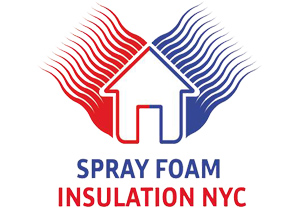NEW ENERGY CODE MEANS BIG EFFICIENCY GAINS FOR CITY AND STATE
Today, the City Council unanimously voted to adopt a new New York City Energy Conservation Code (NYCECC) that will drive greater efficiencies in NYC buildings in the years ahead. The update represents a big step forward for the city’s 2050 carbon reduction goals, with projected energy savings compared to the current code clocking in at nearly 9% for commercial buildings and up to an impressive 32% for residential buildings
The City Council vote follows the state’s recent adoption of a new energy code, the second update to the city and state codes in less than two years. When the code goes into effect on October 3rd, New York will become just the sixth state in the country meeting the most up-to-date federally certified commercial and residential energy requirements. The last few updates to the national model codes have seen dramatic improvements. The NYCECC residential code update represents two code cycles, from 2009 to 2015, plus a number of NYC-specific amendments, which explains that big 32% jump.
Energy Code Improvements Over Time

Adapted from: ACEEE
Major code improvements and a short timeframe from adoption to enforcement means challenges for building industry professionals. With October 3rd right around the corner, architects, engineers and other professionals should be looking to courses like Urban Green’s Conquer the Code and the new GPRO Homes to get up to speed on the latest requirements and acquire the knowledge they need to design higher-performing, code-compliant buildings
What are the key changes in the new NYCECC?
The biggest take-away from the new NYCECC may be the dramatic improvements in building envelope design in the low-rise residential sector. The state code requires increased insulation and verified airtightness, while the NYC-specific requirements will improve insulation even more. The end result? A doubling of the insulation on exterior walls, from R-13 to R-25, plus a requirement that at least some of the wall insulation be continuous — meaning that thermal bridging, which is responsible for both heat loss and mildew, will be dramatically reduced. The new NYCECC is ushering in a new generation of well-designed and well-built low-rise residential buildings in NYC.
Code Highlights
The commercial code
National/New York State code provisions (also applies to NYC)
- Numerous building envelope improvements, including requirements that all below-grade walls and slabs be insulated
- Open combustion fuel-burning appliances will have to be outside the thermal envelope of the building
- Enhanced commissioning requirements, especially for lighting controls
NYC-specific additions
- A groundbreaking new requirement for air tightness testing. Buildings between 25,000 and 50,000 square feet must conduct a blower door test, and buildings over 50,000 square feet must test or inspect each type of air barrier joint or seam
- A 10% decrease in lighting power density for retail and office spaces
- Heat transfer of through-wall PTAC units and air conditioners must now be accounted for in energy calculations
The residential code
National/New York State code provisions (also applies to NYC)
- A requirement that builders run a blower door test on new residential buildings to ensure a maximum air leakage of three air changes per hour
- Significant envelope improvements, for example increasing wall insulation from R13 to R20 in NYC’s climate zone (Zone 4)
- An increase in high-efficacy lighting requirements from 50% to 75%
- A new compliance path based on the Energy Rating Index, which scores buildings from 0 to 100 relative to the 2006 code
NYC-specific additions
- The insulation requirements from a more-stringent climate zone (Zone 6)
- A requirement that new residential buildings be “solar ready” with space for panels allocated
How big is the impact of the new NYCECC?
We have estimated the impact over the next three-year code cycle for new construction only, since renovation rates are difficult to assess. Over the past 15 years the city has added an average of 32 million square feet of building area annually – about 2.5 times Columbia University’s Morningside campus – with about one quarter of that falling under the residential code.2 At that rate of new construction, over the next three-year code cycle the estimated carbon savings translates to about 70,000 metric tons – equivalent to removing approximately 15,000 vehicles from NYC roads.
Today's City Council vote caps off months of dedicated efforts by Gina Bocra and the team at Department of Buildings, who have expertly shepherded the NYCECC from inception to law. Urban Green, AIANY and other stakeholders worked closely with Department of Buildings to craft a number of the NYC-specific provisions that move beyond the legally required state energy code. True to our mission, we also supported the real estate industry's need for codes that make sense for the bottom line, working alongside Jeremy Shannon and Steven Winter Associates to produce analytics proving the cost-effectiveness of a handful of provisions. The new NYCECC represents just that balance: a code that pushes the envelope on building efficiency but is both affordable and achievable.
{wbamp-show end}
